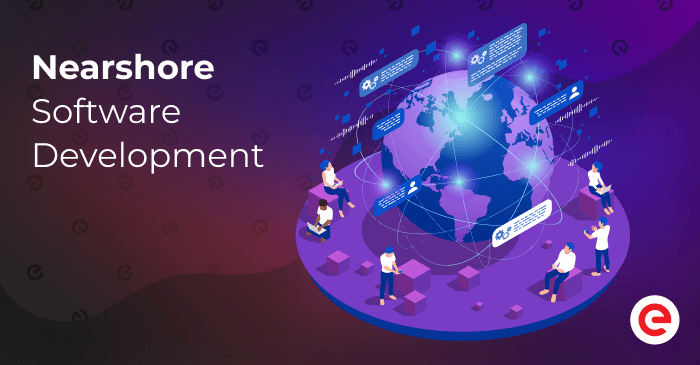In today’s globally interconnected business landscape, outsourcing software development has become a strategic imperative for many companies. Finding the right partner is crucial for success, and the nearshore model presents a compelling alternative to offshore and onshore options. This comprehensive guide explores nearshore software development partnerships, providing a detailed understanding of their benefits, challenges, and considerations for businesses seeking to leverage this approach.
Understanding Nearshore Software Development
Nearshoring involves outsourcing software development to a country geographically closer to your company’s location. This proximity offers several advantages over traditional offshore outsourcing, mitigating some of the challenges associated with significant time zone differences, cultural barriers, and communication complexities. Popular nearshore destinations include Mexico, Canada, and Latin American countries like Costa Rica and Colombia, each offering unique strengths in terms of talent pool, cost-effectiveness, and technological expertise.
Benefits of Choosing a Nearshore Partner
- Reduced Time Zone Differences: Collaboration and communication are significantly smoother with minimal time zone discrepancies. This facilitates real-time communication, quicker feedback loops, and faster project turnaround times.
- Improved Communication and Collaboration: Cultural similarities and proximity often lead to better understanding, enhanced communication, and more effective teamwork. This reduces misunderstandings and streamlines the development process.
- Cost-Effectiveness: While not as inexpensive as offshore outsourcing, nearshore development still offers considerable cost savings compared to building an in-house team, especially considering factors like salaries, infrastructure, and benefits.
- Access to Skilled Talent: Many nearshore locations boast a large pool of skilled software developers with expertise in various technologies and programming languages. This allows companies to tap into a wider talent pool without the geographical limitations.
- Easier Travel and On-Site Collaboration: The geographical proximity makes it easier and more cost-effective to travel to the development team’s location for meetings, workshops, or on-site collaboration, fostering stronger relationships.
- Stronger Intellectual Property Protection: Nearshoring often provides a higher degree of control and security over intellectual property compared to outsourcing to more distant locations.
Choosing the Right Nearshore Software Development Partner
Selecting the ideal nearshore partner requires careful consideration and due diligence. The following factors should be evaluated:
Key Factors to Consider
- Technical Expertise and Skills: Assess the partner’s experience and expertise in relevant technologies, programming languages, and development methodologies. Look for a strong track record of successful projects in your specific industry.
- Communication and Collaboration Capabilities: Evaluate their communication processes, tools, and willingness to collaborate effectively. Consider conducting interviews and assessing their responsiveness and clarity.
- Project Management Methodology: Ensure the partner employs a robust project management methodology (e.g., Agile, Scrum) that aligns with your project requirements and expectations.
- Cultural Compatibility and Language Proficiency: While cultural differences may be less pronounced than with offshore partners, it’s still important to assess cultural compatibility and language proficiency to ensure smooth communication and collaboration.
- Security and Data Protection: Verify the partner’s security protocols and data protection measures to safeguard your sensitive information and intellectual property.
- Pricing and Contract Terms: Carefully review the pricing structure, contract terms, and service level agreements (SLAs) to ensure transparency and clarity.
- References and Case Studies: Request references and review case studies to assess the partner’s past performance and client satisfaction.
- Company Culture and Values: Evaluate the partner’s company culture and values to ensure alignment with your organization’s goals and work style.
Challenges of Nearshore Software Development
While nearshore development offers many advantages, it’s important to acknowledge potential challenges:

Potential Challenges to Address
- Cost Differences: While generally more affordable than onshore development, costs can still vary significantly depending on the location and the partner’s pricing structure.
- Cultural Nuances: Even with geographical proximity, cultural differences can still exist and impact communication and collaboration. Open communication and cultural sensitivity are crucial.
- Legal and Regulatory Compliance: Understanding and complying with the legal and regulatory frameworks of the nearshore location is essential to avoid potential issues.
- Language Barriers: While often less significant than with offshore partners, language barriers can still arise. Ensure clear communication channels and potentially language support if needed.
- Time Zone Differences (Minor): Although less pronounced than offshore, minor time zone differences can still affect real-time collaboration and require careful scheduling.
Frequently Asked Questions (FAQ)
- Q: What is the difference between nearshore and offshore outsourcing? A: Nearshore outsourcing involves partnering with a company in a geographically closer location, while offshore outsourcing involves partnering with a company in a significantly more distant location.
- Q: What are the best countries for nearshore software development? A: Popular nearshore destinations include Mexico, Canada, Costa Rica, Colombia, and other Latin American countries.
- Q: How can I find a reputable nearshore software development partner? A: Thorough research, due diligence, checking references, and reviewing case studies are crucial for finding a reputable partner.
- Q: What are the key factors to consider when choosing a nearshore partner? A: Consider technical expertise, communication capabilities, project management methodology, cultural compatibility, security, pricing, and references.
- Q: What are the potential challenges of nearshore software development? A: Potential challenges include cost variations, cultural nuances, legal compliance, and minor time zone differences.
Conclusion
Nearshore software development offers a compelling solution for businesses seeking to leverage the benefits of outsourcing while minimizing the risks associated with significant geographical distance. By carefully considering the factors discussed in this guide and conducting thorough due diligence, companies can successfully establish a nearshore partnership that drives innovation, enhances efficiency, and delivers exceptional results. Remember that selecting the right partner is a crucial step towards achieving your software development goals.
Finding a nearshore software development partner offers numerous advantages, particularly when dealing with specialized projects. If you’re looking to integrate cutting-edge technologies, consider leveraging the expertise available through providers offering computer vision software development services , which can significantly enhance your product’s capabilities. Ultimately, selecting the right nearshore partner ensures a streamlined development process and a successful project outcome.
References
While specific references to individual nearshore companies are avoided to maintain neutrality, general resources on outsourcing and software development best practices can be found at sites like:

- Gartner (for market research and insights)
- Forbes (for business and technology news)
- CIO (for IT leadership and strategy)
Call to Action
Ready to explore the benefits of nearshore software development? Contact us today for a free consultation and let us help you find the perfect nearshore partner to meet your specific needs and achieve your business objectives.
